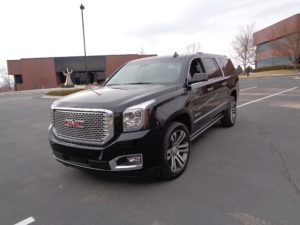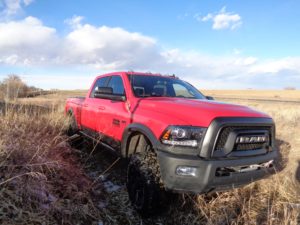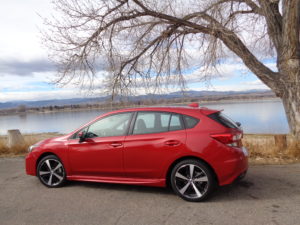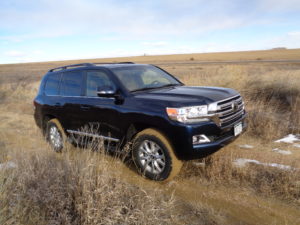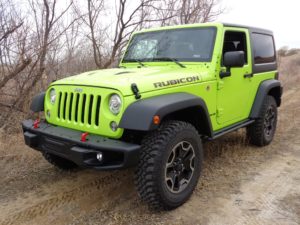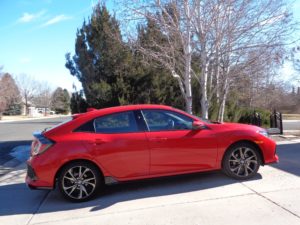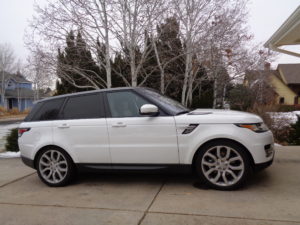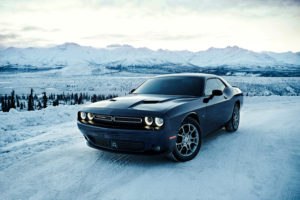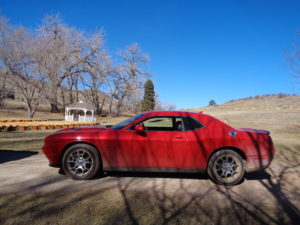
I’m a hands-on driver, as most of us are, and haven’t gotten overly anxious about driverless cars.
I got a touch, though, of autonomous driving (oxymoron?) with the arrival of Audi’s restyled Q7.
It took Audi 10 years to restyle its Q7 flagship SUV; it took me the better part of an hour and about 50 miles to forget all about that and become actively engaged instead in its high-tech electronic advances. They’re somewhat of a next-generation marvel, if not yet quite perfected.
Heading into a near-60-degree turn on Colo. 392, I turned loose of the steering wheel and removed my foot from the accelerator. The 2017 Audi Q7 read the traffic sign and quickly slowed speed to the posted 45 miles per hour, then its active lane assist took control and turned the Q7 inward upon approaching the road-edge stripe and completed the turn before straightening the car’s path down the highway.
Yes, the Audi reads the traffic signs and responds accordingly. If I’m rolling along with the car’s active cruise set on 70, and I approach a posted sign reducing speed to 55, I know the system will in a couple of seconds quickly slow the Q7 to 55 and re-set the cruise speed to the same 55 mph.
It’s an interesting step toward the autonomous driving automobile. In making several test-driving runs with the impressive Q7, I removed my hands from the wheel but remained ready to resume control at an instant, for the system isn’t flawless. More than once, the lane-assist system allowed the SUV to wander past the line along the right side of the highway and I took the wheel as a warning in the message center read: “Driver take hold of steering wheel.” Perhaps the painted line had faded past the point of detection, allowing the veer toward the ditch.
I was at the Detroit Auto Show in 2003, when Audi unveiled the Pikes Peak quattro concept. It was Audi’s first attempt at a sport utility vehicle, and company officials said, “We’ll be studying public opinion very closely.” The Q7 evolved two years later, going on sale as a 2006 model.
Coloradans were momentarily disappointed, of course, when the SUV showed up with the Q7 designation, rather than Pikes Peak. The Q7 quickly found favor in these parts for its roominess and all-wheel-drive performance.
The Q7 is a strong competitor to other European-based SUVs, the BMW X5, Volvo XC90, Mercedes GLE and Range Rover Sport, as well as the Lincoln MKX, Cadillac XT5 and Acura MDX.
The Audi flagship SUV is built in Bratislavia, Slovakia, near the Austrian border.
The ’17 Q7 3.0T quattro tiptronic is a seven-passenger SUV, with performance from a 333-horsepower, 325 lb.-ft. torque V-6, supercharged, and tied to an 8-speed automatic transmission with all-wheel drive.
Three-fourths of my drive time was on the highway and the Q7 averaged 23.2 miles per gallon. Its EPA estimate is 19/25.
Inside, near the shifter, is a touchpad, which lends control for a large audio/navigation display screen high on the dash, a far reach for driver or front-seat passenger. The Bose surround-sound pleasantly entertained us; to gain an even higher level of concert enjoyment, opt for the pricey Band & Olufsen audio system.
Sticker price on the model I reviewed was $68,925, though the higher-end Q7 can reach $80k.
